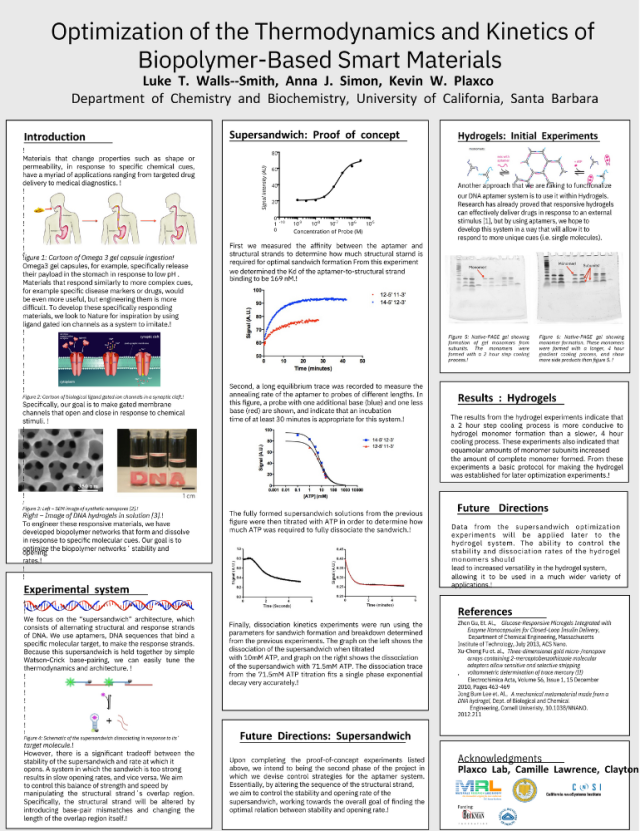Optimization Of The Thermodynamics And Kinetics Of Biopolymer-based Smart Materials

The availability of materials that change their properties, such as shape or permeability, in response to specific physical and/or chemical cues would revolutionize technologies ranging from targeted drug delivery to medical diagnostics. An emerging strategy for developing such “smart” materials parallels the gated ion channels used to control transport into or out of cells. Specifically, biopolymer networks can be engineered to form and dissociate in response to small molecule or protein cues, allowing for specific gating within nanoscale pores. Significant tradeoffs, however, likely exist for such materials between their thermodynamic stability and their kinetic responsiveness (i.e., stable materials respond only very slowly to their cues), which could limit their utility.

Here we explore this tradeoff in a simple, tunable biopolymer network consisting of alternating aptamer (i.e., a molecular cue-binding DNA sequence) and structural support strands that hybridize to form a functional, concatenated chain (a “concatamer”), which breaks-down in the presence of its molecular target. Specifically, we will explore the extent to which changes in the overlapping base-pairing regions of the concatamer, such as the overlap length and the
inclusion of mismatches, affects concatamer stability and opening kinetics. Our experiments take advantage of fluorescence resonance energy transfer, stop-flow, and equilibrium fluorimetry to monitor these effects. Our goal is to discern the design parameters that will lead to optimal material stability and responsiveness.